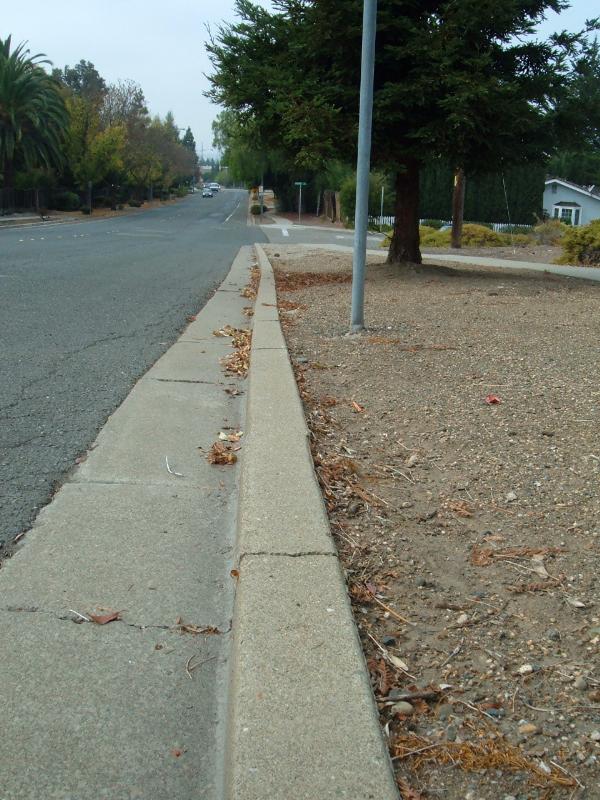As the safety manager for a manufacturing plant located VERY near
the Hayward Fault (see cache Been Here: Osgood), I spend a lot of
time thinking about and preparing for local earthquakes.
On the day of Halloween, 2007, the day after the 5.6 Alum Rock
Earthquake on the nearby Calaveras Fault, I decided to look about
for local evidence of "fault creep" associated with the Hayward
Fault.
I was able to find just such a "creepy" spot in Fremont less
than a mile from where I work, and I decided to place a cache here
to share this visual evidence of earth science with you.

HAYWARD FAULT: The Hayward fault is part of the complex plate
boundary system in central California and is a major branch of the
San Andreas Fault System. Near Hollister, the Calaveras fault
branches off from the San Andreas fault toward a more northerly
direction, and further north, the Hayward fault branches off from
the Calaveras toward the northwest. Scientists believe that a
"major" earthquake occurs along the Hayward Fault on average every
140 years, and that as of this writing it has been 139 years since
the last major Hayward Fault earthquake.
FAULT CREEP: Unlike dramatic ground rupture associated with
intense or severe earthquakes, fault creep (or tectonic creep) is
steady slow movement along a fault line, a few millimeters or a
fraction of an inch a year, that does not generate earthquakes. So,
generally speaking, the "earth" that is southwest of this fault
line is continuously creeping to the northwest relative to the
"earth" that is northeast of the fault line.

CURB OFFSET: When you get to the posted coordinates, examine the
street's curb line as it runs east-west. You should be able to
notice that the curb "bends" or is offset to your "right" by
several inches. (This "bend" is also called "right-lateral offset"
as it is offset to your right as you look at it.)
Examination of the nearby sidewalk will show you several
sidewalk blocks that are also "offset" with respect to others.
Examination of the curbs and sidewalks will also reveal cracks
running in the direction of the fault movement as well.
Next, turn and look at the street itself. You'll see all sorts
of cracks in the street's asphalt running southeast to
northwest.
Crossing the street, you will find similar displacement offsets
of sidewalks and curbs over there as well.
LOG ENTRIES:
While not required, the cache owner would appreciate the following
when logging this cache:
(1) Please include an original picture of you or your GPS with some
"creep" that you found interesting with your log, or
(2) Describe the same in your log.
Enjoy! And happy caching!
50sumtin
P.S. Oh! And don't forget to find the cache! 